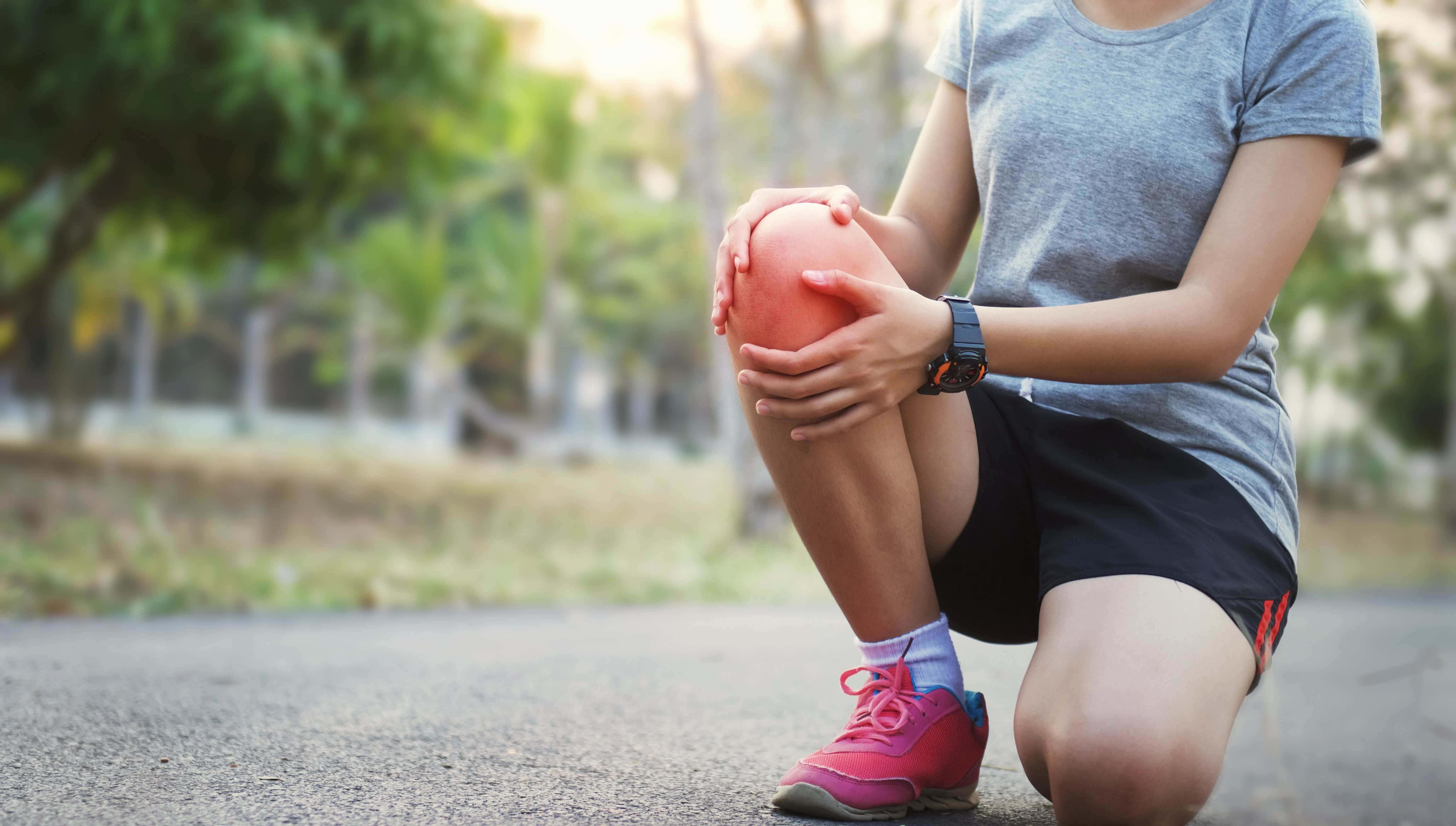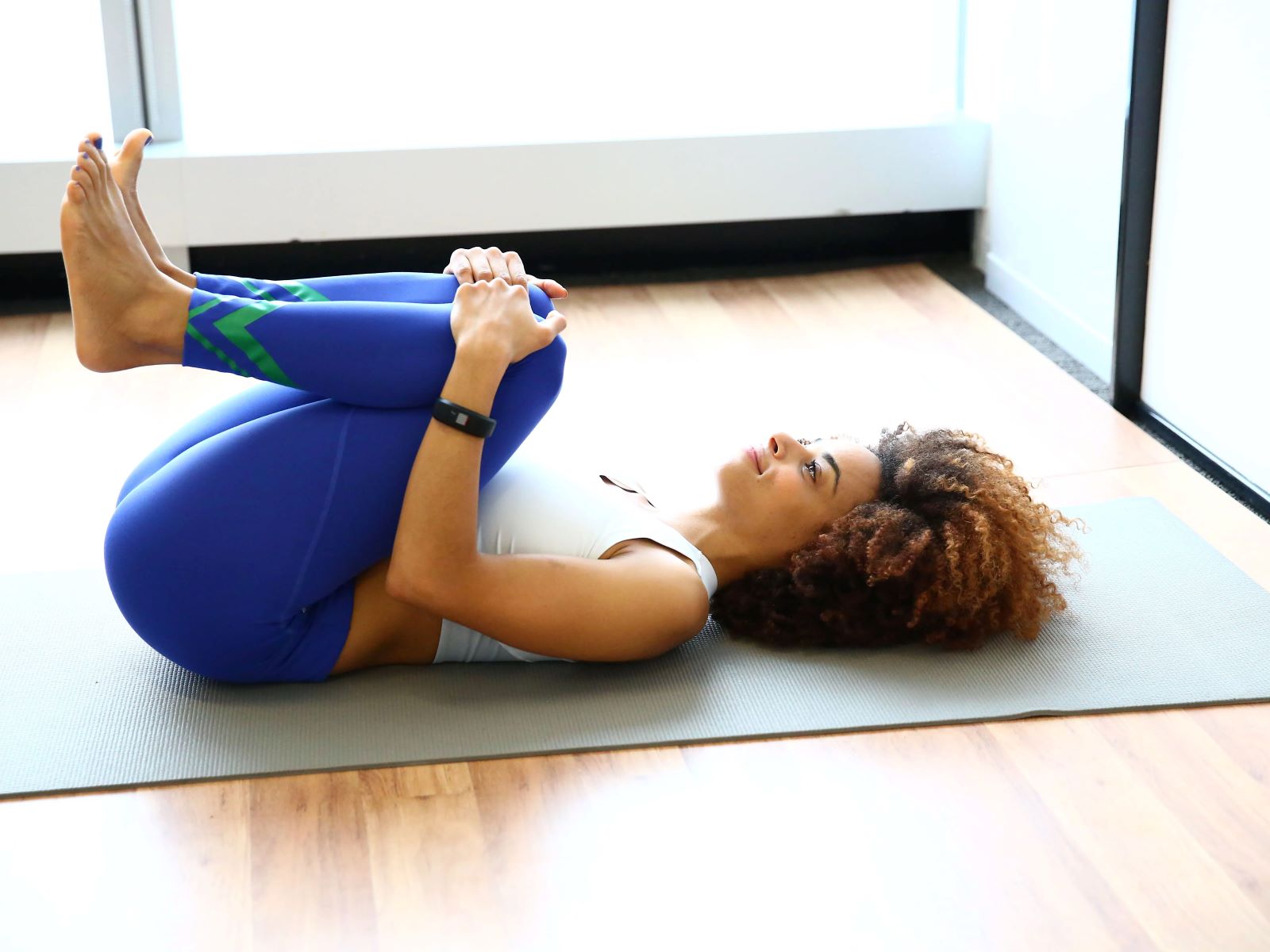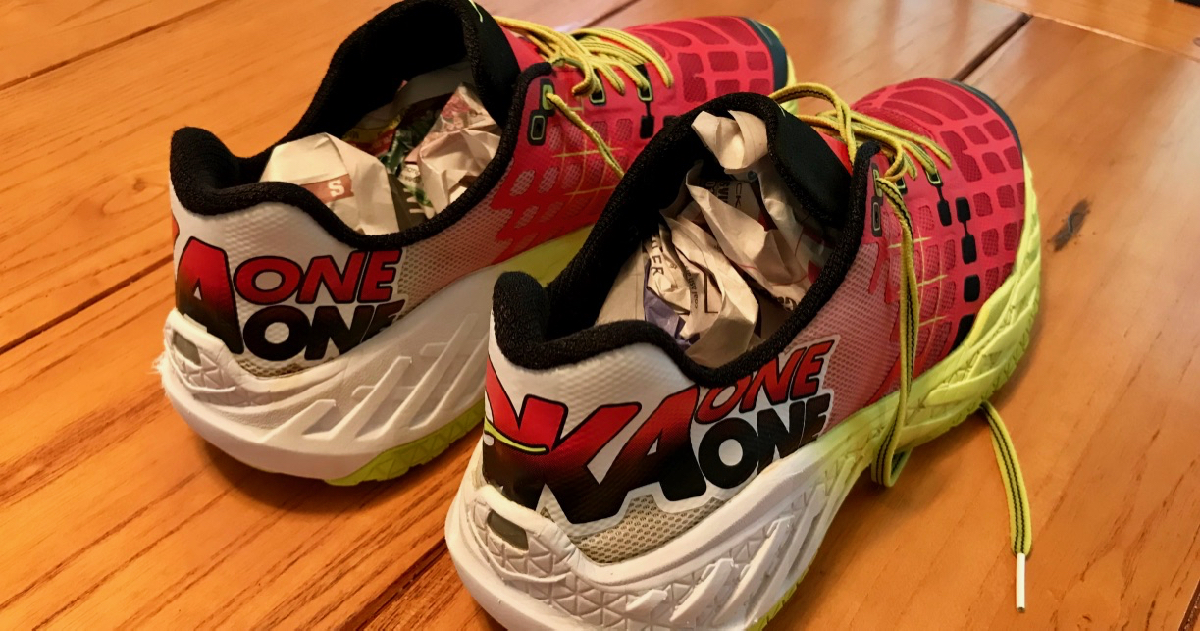Home>Misc>Featured>How To Get Rid Of Joint Pain After Exercise


Featured
How To Get Rid Of Joint Pain After Exercise
Published: October 2, 2023
Discover effective ways to alleviate joint pain after exercise in this informative guide. Learn how to incorporate featured exercises and techniques for relief.
Introduction
Joint pain after exercise can be a frustrating and debilitating experience. It not only hampers your ability to perform physical activities but also affects your overall well-being. Whether you are an athlete, a fitness enthusiast, or someone who simply enjoys staying active, encountering joint pain after exercise is something you would want to avoid.
In this article, we will explore the causes of joint pain after exercise and discuss effective ways to prevent and treat it. By understanding the underlying factors contributing to joint pain and implementing the right strategies, you can minimize the risk of experiencing discomfort and continue enjoying your physical pursuits.
It is important to note that joint pain after exercise can occur in any part of the body, including the knees, hips, shoulders, and elbows. The intensity of the pain can range from mild discomfort to sharp, shooting sensations. However, regardless of the location or intensity, joint pain should never be ignored.
Joint pain can be a result of various factors, including overuse, poor training techniques, inadequate warm-up or cooldown routines, improper nutrition, and underlying medical conditions. While some cases of joint pain after exercise can be resolved with rest and self-care, others may require medical intervention. It is essential to listen to your body and seek professional advice if the pain persists or worsens.
This article aims to provide you with practical tips and strategies to help you prevent and alleviate joint pain after exercise. By incorporating these suggestions into your fitness routine, you can promote joint health and enjoy a pain-free and active lifestyle.
Understanding Joint Pain After Exercise
Joint pain after exercise is a common issue experienced by many individuals, especially those who participate in high-impact or repetitive activities. To effectively prevent and manage joint pain, it is crucial to understand its underlying causes.
When we engage in physical exercise or intense activities, our joints are subjected to stress and pressure. This can lead to micro-trauma and inflammation within the joints. Additionally, repetitive movements or improper form can further exacerbate the strain on the joints, resulting in pain and discomfort.
It is important to note that joint pain after exercise is different from muscle soreness. While muscle soreness is typically felt within the muscles and resolves within a few days, joint pain lingers and affects the joints themselves. This can be a result of overuse, insufficient recovery time, inadequate warm-up or cooldown routines, or underlying joint conditions such as arthritis.
Another factor to consider is the impact of age and wear and tear on the joints. As we age, the cartilage that cushions our joints may begin to deteriorate, leading to increased friction and pain during physical activity. This age-related joint degeneration is known as osteoarthritis and is a common cause of joint pain after exercise in older individuals.
It is also worth mentioning that certain factors can increase the risk of experiencing joint pain after exercise. These include obesity, improper footwear, sudden increases in exercise intensity or duration, and a history of previous joint injuries.
By understanding the causes of joint pain after exercise, you can take proactive steps to prevent and manage it. Implementing proper training techniques, incorporating appropriate warm-up and cooldown exercises, and giving your body sufficient time to rest and recover are all essential components of an effective joint pain prevention strategy.
Causes of Joint Pain After Exercise
Joint pain after exercise can stem from various factors, ranging from overuse and poor training techniques to underlying medical conditions. Understanding the specific causes can help you pinpoint the contributing factors and take appropriate measures to prevent and manage joint pain effectively.
1. Overuse and repetitive activities: Engaging in high-impact or repetitive activities, such as running, jumping, or weightlifting, without giving your joints enough time to recover can result in joint pain. Overuse can lead to inflammation, micro-tears in the ligaments or tendons, and even stress fractures, causing discomfort and pain.
2. Improper training techniques: Using incorrect form, applying excessive force or load on the joints, or neglecting proper warm-up and cooldown routines can put unnecessary strain on your joints. This can lead to joint pain and increase the risk of injuries in the long run. It is essential to learn proper techniques and gradually increase the intensity and duration of your workouts to protect your joints.
3. Insufficient warm-up and cooldown: Skipping warm-up exercises before engaging in physical activity and neglecting cooldown exercises afterward can contribute to joint pain. Warm-up exercises help increase blood flow, improve joint mobility, and prepare your muscles and joints for the upcoming activity. Cooling down with gentle stretches and mobility exercises helps reduce muscle stiffness and prevent joint stiffness and pain after exercise.
4. Inadequate rest and recovery: Giving your body enough time to rest and recover between workouts is vital for joint health. Continuous and intense training without sufficient rest can lead to overuse and put excessive stress on your joints. Adequate rest allows your body to repair damaged tissues and replenish energy stores, reducing the risk of joint pain and injuries.
5. Underlying medical conditions: Certain medical conditions, such as osteoarthritis, rheumatoid arthritis, bursitis, tendinitis, or joint inflammation, can contribute to joint pain after exercise. These conditions may be exacerbated by physical activity or strain on the joints. If you have a pre-existing joint condition, it is crucial to work with your healthcare provider to develop an exercise plan that suits your needs and minimizes joint pain.
Awareness of these common causes of joint pain after exercise can help you make informed decisions about your fitness routine. By addressing these underlying factors and making necessary modifications, you can reduce the risk of joint pain and promote long-term joint health.
Preventing Joint Pain After Exercise
Prevention is the key to avoiding joint pain after exercise. By implementing effective strategies and making certain lifestyle adjustments, you can significantly reduce the risk of experiencing joint discomfort and maintain optimal joint health. Here are some preventive measures you can take:
1. Warm-up and Cool-down Exercises: Prior to starting any physical activity, it is essential to perform a thorough warm-up routine. This helps increase blood flow to the muscles and joints, enhances flexibility, and prepares your body for the upcoming exercise. Similarly, incorporating a cooldown routine with gentle stretches and mobility exercises after exercise helps prevent muscle and joint stiffness.
2. Proper Training Techniques: Practicing correct form and technique during exercise is crucial for minimizing stress on your joints. Seek guidance from a fitness professional or coach to ensure your movements are aligned and your technique is optimized to protect your joints.
3. Proper Nutrition and Hydration: Maintaining a well-balanced diet and staying hydrated is essential for joint health. Consuming a variety of foods rich in antioxidants, omega-3 fatty acids, and vitamins and minerals can help reduce inflammation and support joint function. Additionally, staying properly hydrated ensures optimal joint lubrication and can help prevent joint pain.
4. Rest and Recovery: Building sufficient rest days into your workout routine is essential for allowing your body to recover. This includes both rest days where no physical activity is performed and active recovery days where low-impact exercises such as swimming or yoga can be beneficial. Proper rest and recovery help repair damaged tissues and reduce the risk of overuse injuries and joint pain.
5. Proper Gear and Equipment: Using appropriate footwear and protective gear is essential for joint protection. Invest in good-quality shoes that provide adequate support and cushioning for your specific activities. If necessary, consider using orthotic inserts or supportive braces to minimize stress on your joints.
6. Gradual Progression: Avoid sudden intensification of your workout routine. Gradually increase the intensity, duration, or weight load to allow your joints to adapt and strengthen over time. Avoid pushing through pain, as this may lead to injury and exacerbate joint pain.
By following these preventive measures, you can minimize the risk of joint pain after exercise. It is important to listen to your body and make adjustments as needed. If you experience persistent or worsening joint pain, it is advisable to seek medical advice for proper assessment and treatment.
Warm-Up and Cool-Down Exercises
Proper warm-up and cool-down exercises play a crucial role in preventing joint pain after exercise. They help prepare your body for physical activity and facilitate a smooth transition between rest and exercise, minimizing the risk of injury and post-workout discomfort. Here are some essential warm-up and cool-down exercises to incorporate into your routine:
Warm-Up Exercises:
- Dynamic Stretches: Perform gentle stretches that focus on the muscles and joints relevant to your upcoming activity. Dynamic stretches, such as arm circles, leg swings, and walking lunges, help increase flexibility and enhance joint mobility.
- Aerobic Activity: Engage in light aerobic exercises, such as brisk walking, jogging, or cycling, to gradually increase your heart rate and blood flow. This helps warm up your muscles and prepares them for more vigorous movements.
- Joint Mobilization: Perform exercises that specifically target joint mobility, such as shoulder rotations, hip circles, and wrist circles. These movements help lubricate the joints, improve range of motion, and reduce the risk of joint stiffness during exercise.
Cool-Down Exercises:
- Static Stretches: Hold gentle stretches for 15-30 seconds, targeting the major muscle groups you engaged during your workout. Static stretches, such as standing quad stretches, hamstring stretches, and calf stretches, help lengthen and relax the muscles, promoting flexibility and reducing muscle soreness.
- Deep Breathing and Relaxation: Take a few moments to practice deep breathing and relaxation techniques. This helps calm your body and mind, allowing for a gradual transition from exercise to rest. Relaxation can also help alleviate any accumulated stress or tension in the body.
- Foam Rolling or Self-Massage: Use a foam roller or perform self-massage techniques to target specific muscle groups. This can help release any tightness or knots in the muscles, promoting relaxation and recovery.
Remember, the warm-up and cool-down exercises should be specific to the activities you are planning to engage in. Tailor your warm-up and cool-down routines to address the muscles and joints involved in your particular exercise or sport.
By incorporating these essential warm-up and cool-down exercises into your fitness routine, you can minimize the risk of joint pain after exercise. Not only do they promote joint mobility and flexibility, but they also optimize your body’s readiness for physical activity and aid in post-workout recovery.
Proper Training Techniques
Adopting proper training techniques is essential for preventing joint pain after exercise. Using correct form and technique can help reduce the strain on your joints, minimize the risk of overuse injuries, and promote optimal joint health. Here are some important tips to consider:
1. Seek Professional Guidance: If you are new to a particular exercise or unsure about proper form, seek guidance from a certified fitness professional or trainer. They can teach you the correct technique and provide valuable insights to ensure you are performing exercises safely and effectively.
2. Start with Low Intensity: When beginning a new exercise or increasing the intensity of your workout, start with a lower level of intensity. Gradually progress over time to allow your joints to adapt to the increased demands. This gradual approach helps prevent sudden stress on the joints, reducing the risk of injury and joint pain.
3. Focus on Alignment: Pay attention to your body’s alignment during exercises. Maintain good posture and ensure the joints are properly aligned throughout the movement. Avoid excessive twisting, bending, or torque on the joints, as these can lead to joint strain and discomfort.
4. Use Appropriate Weight and Resistance: When incorporating strength training exercises into your routine, choose weights and resistance levels that are appropriate for your fitness level. Using excessively heavy weights can put undue stress on your joints, increasing the risk of injury. Gradually increase weight and resistance as your strength and technique improve.
5. Prioritize Range of Motion: Perform exercises through a full range of motion to promote joint flexibility and mobility. This helps maintain joint health and reduces the likelihood of stiffness and pain after exercise. Avoid abrupt or jerky movements that may strain the joints.
6. Listen to Your Body: Pay attention to any discomfort or pain during exercise. If you experience sharp or persistent joint pain, it may be an indication of improper form or overloading the joints. Stop the exercise and assess your technique or seek professional advice.
7. Incorporate Low-Impact Exercises: If you are prone to joint pain or have pre-existing joint conditions, consider incorporating low-impact exercises into your routine. Activities such as swimming, cycling, or using an elliptical machine put less stress on the joints while still providing a cardiovascular workout.
Remember, proper training techniques not only help prevent joint pain but also improve overall exercise effectiveness and efficiency. By paying attention to form, alignment, and progressive overload, you can protect your joints and enjoy a safe and enjoyable workout experience.
Proper Nutrition and Hydration
Proper nutrition and hydration play a significant role in maintaining joint health and preventing joint pain after exercise. The foods and fluids you consume can impact inflammation levels, tissue repair, and overall joint function. Here are some essential factors to consider:
1. Anti-Inflammatory Foods: Include foods rich in anti-inflammatory properties in your diet. These can help reduce inflammation in the joints, minimizing the risk of joint pain. Examples include fatty fish (like salmon and sardines), walnuts, turmeric, ginger, leafy greens, and berries.
2. Omega-3 Fatty Acids: Omega-3 fatty acids have been shown to have anti-inflammatory effects. Incorporate foods such as fatty fish, chia seeds, flaxseeds, and walnuts into your meals to promote joint health.
3. Antioxidant-Rich Foods: Antioxidants help protect the joints from damage caused by free radicals. Colorful fruits and vegetables, such as berries, oranges, tomatoes, spinach, and bell peppers, are excellent sources of antioxidants.
4. Collagen-Rich Foods: Collagen is a key component of joint tissues. Consuming foods rich in collagen, such as bone broth, chicken, fish, and certain cuts of meat, can provide the necessary building blocks for joint health.
5. Adequate Protein Intake: Protein is crucial for tissue repair and muscle maintenance. Include lean sources of protein, such as chicken, turkey, tofu, and legumes, in your diet to support joint health and recovery after exercise.
6. Hydration: Staying properly hydrated is essential for joint lubrication and overall joint health. Drink an adequate amount of water throughout the day, especially before, during, and after exercise. Proper hydration helps maintain joint flexibility and reduces the risk of joint pain and stiffness.
7. Nutrient-Dense Diet: Ensure your diet is well-rounded and includes a variety of nutrients, such as vitamins D, C, and E, calcium, and magnesium. These nutrients are essential for overall bone and joint health.
It is worth noting that individual dietary needs may vary based on age, activity level, and any underlying medical conditions. Consulting with a registered dietitian can provide personalized recommendations to support your joint health and overall well-being.
Remember, proper nutrition and hydration are not only crucial for joint health but also for overall physical performance and well-being. By nourishing your body with the right foods and fluids, you can reduce the risk of joint pain after exercise and optimize your body’s ability to recover and adapt.
Rest and Recovery
Rest and recovery are vital components of an effective exercise regimen and play a significant role in preventing joint pain. Giving your body enough time to rest and recover allows for tissue repair, reduces inflammation, and protects against overuse injuries. Here are some key considerations for rest and recovery:
1. Allow for Adequate Rest Days: Incorporate regular rest days into your exercise routine. These days give your body a chance to recover and repair any muscle and joint damage that may have occurred during exercise. Plan your workouts in a way that allows for sufficient rest between intense sessions.
2. Prioritize Sleep: Quality sleep is essential for optimal recovery. During sleep, your body releases growth hormone, repairs damaged tissues, and restores energy levels. Aim for 7-9 hours of uninterrupted sleep each night to support joint health and overall well-being.
3. Active Recovery: On rest days, consider engaging in gentle low-impact activities as part of your recovery routine. Light walking, swimming, or yoga can promote blood flow, reduce muscle stiffness, and enhance joint mobility without placing excessive stress on your joints.
4. Listen to Your Body: Pay attention to any signs of fatigue or pain during and after exercise. Pushing through excessive pain or fatigue can lead to overuse injuries and joint damage. It’s important to listen to your body’s signals and modify or take a break from your workouts when necessary.
5. Manage Stress Levels: Chronic stress can increase inflammation levels in the body and exacerbate joint pain. Incorporate stress management techniques such as meditation, deep breathing exercises, or engaging in hobbies or activities you enjoy. Managing stress levels can positively impact your recovery and overall joint health.
6. Foam Rolling and Self-Massage: Using a foam roller or performing self-massage techniques can help release tension and tightness in the muscles, promoting relaxation and recovery. Target areas of your body that feel particularly sore or tense after exercise.
Remember, rest and recovery are just as important as the exercise itself. By incorporating proper rest and recovery practices into your routine, you allow your body to adapt, repair, and prevent joint pain, ensuring you can continue to engage in physical activities safely and effectively.
Treating Joint Pain After Exercise
Experiencing joint pain after exercise does not necessarily mean the end of your physical activities. There are several treatment options available to alleviate joint pain and promote the healing process. Here are some effective methods for treating joint pain after exercise:
1. Rest and Ice: When experiencing joint pain, it is important to allow your body time to rest and recover. Avoid activities that exacerbate the pain and apply ice packs wrapped in a towel to the affected area for about 15-20 minutes every 2-3 hours. Ice helps reduce inflammation and numb pain, providing temporary relief.
2. Compression and Elevation: Applying compression, such as a bandage or wrap, to the affected joint can help reduce swelling and provide support. Elevating the joint above heart level can further reduce swelling by promoting proper fluid drainage.
3. Over-the-Counter Pain Relievers: Nonsteroidal anti-inflammatory drugs (NSAIDs), such as ibuprofen or naproxen, can provide temporary pain relief and reduce joint inflammation. However, it is important to follow the recommended dosage and consult a healthcare professional if you have any underlying health conditions.
4. Physical Therapy and Rehabilitation Exercises: If the joint pain persists or worsens, a physical therapist can develop a targeted exercise program to improve joint range of motion, strength, and stability. They may also utilize techniques such as heat therapy, massage, or ultrasound to alleviate pain and promote healing.
5. Modify or Adjust Activities: If certain exercises or activities consistently cause joint pain, it may be necessary to modify or avoid them altogether. Consult with a healthcare professional or a fitness specialist to find alternative exercises that are less stressful on the joints while still allowing you to stay active.
6. Use Supportive Devices: Depending on the location and severity of the joint pain, using supportive devices such as braces, orthotics, or splints can provide added stability and relieve stress on the affected joint during physical activity.
It is important to note that while self-care measures and over-the-counter treatments can help manage mild joint pain, seek professional medical advice if the pain is severe, persists for an extended period, or is accompanied by other concerning symptoms.
Remember, treating joint pain after exercise requires a comprehensive approach that includes rest, targeted therapies, and proper guidance from healthcare professionals. By addressing joint pain promptly and with appropriate care, you can ensure a safe and effective return to your physical activities.
Rest and Ice
Rest and ice are two simple yet effective methods to alleviate joint pain after exercise. By implementing these strategies, you can reduce inflammation, numb pain, and promote the healing process. Here”s how you can use rest and ice to treat joint pain:
Rest: When you experience joint pain after exercise, it is essential to give your body time to rest and recover. Avoid activities that worsen the pain or put additional strain on the affected joint. Rest allows inflamed tissues to calm down and heal, reducing pain and discomfort. Give yourself adequate rest periods between workouts to prevent overuse injuries that can contribute to joint pain.
Ice: Ice is a simple yet effective way to alleviate joint pain and reduce inflammation. Ice helps constrict blood vessels, decrease blood flow to the affected area, and temporarily numb the pain. When applying ice, remember to:
- Wrap the ice pack in a thin towel or cloth to prevent direct contact with the skin, as this can cause ice burn.
- Apply the ice pack to the affected joint for about 15-20 minutes at a time. Repeat every 2-3 hours during the initial stages of pain or inflammation.
- Avoid leaving the ice pack on for too long, as prolonged exposure to cold can have adverse effects on the skin and tissues.
Ice can be especially beneficial during the first 24-48 hours after the onset of joint pain or following intense exercise sessions. However, if the pain persists or worsens after a few days of rest and ice, it is advisable to consult a healthcare professional for further evaluation.
It is important to note that rest and ice are not standalone treatments for chronic or severe joint pain. While they can help provide temporary relief and reduce inflammation, it is crucial to address the underlying causes of joint pain and seek appropriate medical advice if the pain persists or is accompanied by other concerning symptoms.
Incorporating rest periods into your exercise routine and using ice as needed can be an effective approach to managing joint pain after exercise. However, it is important to listen to your body and tailor your treatment approach based on your specific needs and the advice of healthcare professionals.
Compression and Elevation
Compression and elevation are two techniques that can provide relief from joint pain after exercise. These methods help reduce swelling, improve blood flow, and promote proper fluid drainage, aiding in the healing process. Here’s how you can effectively utilize compression and elevation:
Compression: Applying compression to the affected joint can help reduce swelling and provide support. Compression garments, such as elastic bandages or sleeves, can be used to wrap the joint snugly but not too tightly. Compression works by exerting pressure on the tissues, which helps prevent the buildup of excess fluid and reduces inflammation. The compression wrap should be firm but not constrictive, allowing for proper circulation.
Remember these key points when using compression:
- Start wrapping from the furthest point away from the heart, gradually working your way towards the heart. This helps promote blood flow and reduces the risk of swelling.
- Avoid wrapping too tightly, as this can impede circulation and cause discomfort or further damage.
- Remove the compression wrap if you experience numbness, tingling, or increased pain.
Elevation: Elevating the affected joint above the level of the heart can help reduce swelling by facilitating proper fluid drainage. Prop up the joint on a pillow or cushion, ensuring it is comfortably elevated. Elevation takes advantage of gravity to encourage the downward flow of excess fluid and reduce pressure in the joint. This technique is particularly effective when combined with rest and compression.
Remember these key points when using elevation:
- Avoid keeping the joint in a fully extended position, as this can restrict blood flow.
- Try to maintain the elevated position for as long as possible, especially during periods of rest.
- Ensure the joint is supported and comfortable while elevated.
Compression and elevation can be beneficial immediately after exercise or when joint pain and swelling occur. These techniques can provide temporary relief and help promote the healing process. However, it is important to address the underlying causes of joint pain and seek medical advice if the pain persists or worsens.
It’s worth noting that compression and elevation are not standalone treatments and may be used in conjunction with other methods, such as rest, ice, and proper medical care, depending on the severity and cause of the joint pain.
By utilizing compression and elevation appropriately, you can manage swelling, reduce inflammation, and support the recovery of your joints, allowing you to continue engaging in physical activity with greater comfort and ease.
Over-the-Counter Pain Relievers
Over-the-counter (OTC) pain relievers can provide temporary relief from joint pain after exercise. They are easily accessible and can help reduce pain and inflammation, allowing you to continue with your daily activities. Here are some common types of OTC pain relievers:
1. Nonsteroidal Anti-Inflammatory Drugs (NSAIDs): NSAIDs, such as ibuprofen (Advil) and naproxen sodium (Aleve), are effective in reducing pain and inflammation associated with joint pain. These medications work by blocking the production of certain chemicals called prostaglandins, which are responsible for triggering pain and inflammation in the body.
When using NSAIDs, it is important to:
- Follow the recommended dosage instructions provided on the packaging or as directed by a healthcare professional.
- Avoid taking NSAIDs for an extended period without consulting your doctor.
- Be cautious of potential side effects, such as stomach irritation or increased bleeding risk, especially if you have underlying medical conditions or are taking other medications.
2. Acetaminophen: Acetaminophen (Tylenol) is another common over-the-counter pain reliever that can help alleviate joint pain. Unlike NSAIDs, acetaminophen does not have significant anti-inflammatory effects. Instead, it primarily targets pain perception in the brain, providing relief from discomfort. However, it is important to note that acetaminophen does not reduce inflammation, so it may be less effective for certain types of joint pain caused by inflammation.
When using acetaminophen, it is important to:
- Follow the recommended dosage instructions provided on the packaging or as directed by a healthcare professional.
- Avoid exceeding the maximum daily dosage to prevent potential liver damage.
- Be aware of other products that might contain acetaminophen, such as cold and flu medications, and ensure you do not exceed the recommended dosage when using multiple products simultaneously.
3. Topical Pain Relievers: Topical pain relievers, such as creams, gels, or patches, can also provide localized relief for joint pain. These products usually contain ingredients like menthol, methyl salicylate, or capsaicin, which create a cooling or warming sensation and help distract from pain. They are applied directly to the skin over the affected joint, offering a targeted approach for pain relief.
When using topical pain relievers, it is important to:
- Read and follow the instructions provided on the packaging carefully.
- Avoid applying these products to broken or irritated skin.
- Wash your hands thoroughly after application to prevent accidentally transferring the product to sensitive areas like the eyes.
OTC pain relievers can provide temporary relief from joint pain after exercise. However, it is important to use them judiciously and in accordance with the instructions provided. If joint pain persists or worsens, or if you have any underlying health conditions, it is recommended to consult a healthcare professional for further evaluation and guidance.
Physical Therapy and Rehabilitation Exercises
Physical therapy and rehabilitation exercises are essential components of treating joint pain after exercise. These interventions help manage pain, improve joint function, and promote long-term recovery. Working with a physical therapist can provide personalized guidance and support based on your specific needs. Here’s how physical therapy and rehabilitation exercises can help:
1. Assessment and Treatment Plan: A physical therapist will assess your joint pain, movement patterns, and overall function. They will then develop a customized treatment plan tailored to your specific condition and goals. This may include a combination of manual therapy, exercises, and other modalities.
2. Pain Management: Physical therapists have techniques to help relieve joint pain. These may include hands-on therapies such as massage, joint mobilization, or trigger point release. By addressing pain directly, physical therapy can improve your ability to tolerate exercise and engage in everyday activities.
3. Range of Motion and Flexibility: Joint pain can limit your range of motion and flexibility. Physical therapists will provide exercises and stretching techniques to improve joint mobility and flexibility. These exercises target the specific joint affected by pain, helping to restore normal movement patterns.
4. Strengthening and Stability: Physical therapy will often incorporate exercises to strengthen the muscles around the joint. Strengthening exercises help support and stabilize the joint, reducing stress and the risk of future injuries. Strong muscles also contribute to improved joint function and overall joint health.
5. Balance and Proprioception: Joint pain can affect your balance and proprioception (awareness of joint position). Physical therapists will incorporate balance training and proprioception exercises to improve stability and reduce the risk of falls or further joint damage. These exercises challenge your body’s control and can enhance joint stability during physical activities.
6. Functional Training: Physical therapists focus on functional training, which involves exercises that mimic the movements and activities you perform in your daily life or specific sports and activities. This approach helps ensure that your joints can handle the demands of your activities while reducing the risk of re-injury.
7. Education and Home Exercise Program: Physical therapists will educate you about your condition, proper body mechanics, and techniques to prevent future joint pain. They will also provide you with a home exercise program tailored to your needs. Consistently performing these exercises at home can complement your in-clinic therapy, improve results, and maintain joint health in the long run.
Physical therapy and rehabilitation exercises are effective in managing joint pain after exercise by targeting the underlying causes and improving joint function. Consistency and adherence to your physical therapy program are key to achieving optimal outcomes. Working closely with a physical therapist can provide you with the guidance, support, and expertise necessary for a safe and successful recovery.
Seeking Medical Advice
If joint pain persists, worsens, or significantly interferes with your daily activities, it is important to seek medical advice. A healthcare professional can provide proper evaluation, diagnosis, and guidance to address your joint pain effectively. Here are some reasons why seeking medical advice is crucial:
1. Accurate Diagnosis: Joint pain can have various causes, ranging from acute injuries to underlying medical conditions like arthritis. A healthcare professional can perform a thorough examination, review your medical history, and order any necessary diagnostic tests to determine the exact cause of your joint pain. This accurate diagnosis is essential for developing an effective treatment plan.
2. Tailored Treatment Plan: Every individual’s joint pain may have unique contributing factors and require a personalized treatment approach. Healthcare professionals, such as orthopedic specialists or rheumatologists, can recommend appropriate treatment options based on the specific cause of your joint pain. These may include medication, physical therapy, injections, or surgical interventions, depending on the severity and underlying condition.
3. Management of Underlying Conditions: If your joint pain is due to an underlying medical condition such as arthritis, seeking medical advice is crucial. An accurate diagnosis and ongoing medical management can help you effectively control and manage your condition, minimizing the impact it has on your joint health and overall well-being.
4. Prevention of Further Damage: Ignoring persistent or worsening joint pain can lead to further damage or complications. Early intervention and appropriate treatment can help prevent the progression of joint-related issues, ensuring better long-term joint health and mobility.
5. Guidance on Activity Modification: A healthcare professional can provide recommendations on modifying your activities or exercise routine to prevent exacerbation of joint pain. They can help you identify alternative exercises or techniques that are gentler on your joints while still allowing you to stay active and maintain fitness levels.
6. Referral to Specialists: In some cases, your primary healthcare provider may refer you to a specialist, such as a rheumatologist, orthopedic surgeon, or sports medicine physician. These specialists have specific expertise in diagnosing and treating joint-related conditions, ensuring you receive comprehensive care for your joint pain.
Remember, seeking medical advice is important if you experience persistent or severe joint pain after exercise. Healthcare professionals can provide the necessary expertise to accurately diagnose, manage, and treat your joint pain. In addition, they can provide valuable guidance on preventing further damage and optimizing your joint health for the long term.
Conclusion
Joint pain after exercise can be a common and frustrating experience, but it doesn’t have to impede your active lifestyle. By understanding the causes, implementing preventive measures, and utilizing effective treatment strategies, you can minimize joint pain and promote overall joint health.
Taking the time to warm up properly, use correct training techniques, and prioritize rest and recovery can significantly reduce the risk of joint pain after exercise. Incorporating proper nutrition and hydration into your routine supports joint health, while seeking medical advice when needed ensures appropriate diagnosis and treatment of any underlying conditions.
If joint pain does occur, utilizing rest and ice, compression and elevation, and over-the-counter pain relievers can provide temporary relief. However, for persistent or severe joint pain, it is important to consult with a healthcare professional for a comprehensive evaluation and personalized treatment plan. Physical therapy and rehabilitation exercises can play a crucial role in recovering from joint pain, improving joint flexibility, and building strength and stability.
Remember, everyone’s body is unique, and what works for one person may not work for another. It is important to listen to your body, pay attention to any pain or discomfort, and make adjustments to your exercise routine as needed. Your joint health is invaluable, and by taking proactive measures, you can keep your joints healthy, mobile, and pain-free for years to come.









